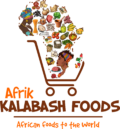Introduction:
Food is not just sustenance; it’s an experience that tantalizes our taste buds and nourishes our bodies. However, amidst the joy of culinary exploration, there lurks a potential danger: food poisoning. This common yet preventable illness can turn a delightful meal into a distressing ordeal. In this blog post, we’ll delve into the causes, symptoms, prevention, and recovery strategies for food poisoning, empowering you to safeguard your health and enjoy your culinary adventures with peace of mind.
Understanding Food Poisoning:
Food poisoning, also known as foodborne illness, occurs when we consume contaminated food or beverages. Bacteria, viruses, parasites, or toxins present in improperly handled, stored, or prepared food can lead to gastrointestinal distress and other symptoms.
Common Culprits:
Several microorganisms are responsible for causing food poisoning, including Salmonella, E. coli, Campylobacter, norovirus, and Listeria. These pathogens can contaminate a wide range of foods, including raw meat, poultry, seafood, eggs, unpasteurized dairy products, fruits, and vegetables.
Symptoms:
The symptoms of food poisoning can vary depending on the type of contaminant and individual factors. However, common symptoms include nausea, vomiting, diarrhea, abdominal pain, fever, and dehydration. In severe cases, food poisoning can lead to complications such as organ failure and even death, particularly in vulnerable populations such as young children, the elderly, pregnant women, and individuals with weakened immune systems.
Prevention Strategies:
Preventing food poisoning begins with safe food handling practices at every stage, from purchasing to preparation to storage. Here are some key strategies to minimize the risk of foodborne illness:
Practice Proper Hand Hygiene: Wash your hands thoroughly with soap and water before and after handling food, especially raw meat, poultry, seafood, and eggs.
Cook Foods Thoroughly: Use a food thermometer to ensure that meat, poultry, seafood, and eggs are cooked to the appropriate internal temperature to kill harmful bacteria.
Store Food Safely: Refrigerate perishable foods promptly and store them at the appropriate temperature (below 40°F or 4°C). Thaw frozen foods safely in the refrigerator, microwave, or cold water.
Separate Raw and Cooked Foods: Use separate cutting boards, utensils, and plates for raw and cooked foods to prevent cross-contamination.
Wash Fruits and Vegetables: Rinse fresh fruits and vegetables under running water before eating, cutting, or cooking to remove dirt, bacteria, and pesticides.
Be Mindful of Food Handling: Avoid leaving perishable foods at room temperature for extended periods, and discard any food that smells or looks suspicious.
Recovery Strategies:
If you suspect that you have food poisoning, it’s essential to stay hydrated and rest. Here are some recovery strategies to help alleviate symptoms:
Stay Hydrated: Drink plenty of fluids such as water, electrolyte-rich drinks, and clear broths to prevent dehydration caused by vomiting and diarrhea.
Avoid Certain Foods: Steer clear of spicy, greasy, or heavy foods that may exacerbate gastrointestinal symptoms.
Rest and Relaxation: Give your body time to recover by getting plenty of rest and avoiding strenuous activities.
Seek Medical Attention: If your symptoms are severe or prolonged, or if you belong to a high-risk group, consult a healthcare professional for proper diagnosis and treatment.
Conclusion:
Food poisoning is a distressing experience that can dampen our enjoyment of food and compromise our well-being. However, by understanding the causes, symptoms, prevention, and recovery strategies for food poisoning, we can minimize the risk and navigate the culinary world with confidence. By practicing safe food handling practices and staying vigilant, we can savor the pleasures of dining while safeguarding our health. Remember, when it comes to food safety, an ounce of prevention is worth a pound of cure. Stay safe, stay healthy, and bon appétit!

